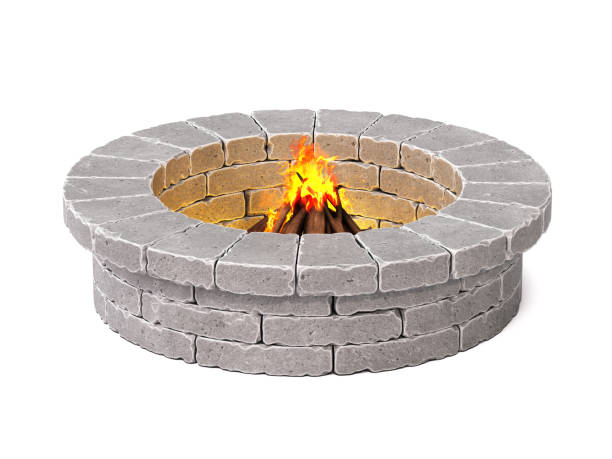Whether you’re installing a firepit for entertaining guests or staying warm at night, there are some things you should know before getting started. These include uneven ground, flammable materials, and windy conditions. You also should know the proper distance from your house and avoid burning anything that might catch fire.
Avoid flammable materials
When installing a firepit in your backyard, you should avoid using materials that are flammable or contain moisture. These materials, such as pea gravel or compressed concrete blocks, can trap the steam created when a fire burns and cause a dangerous explosion.
Firstly, place the fire pit at least 10 feet away from any structures in your backyard. Also, ensure it is not placed under any power lines, trees, or other low-hanging branches. If possible, put it on flat ground, preferably on dirt. Never place it on a wooden deck, as it can catch fire easily.
Another essential tip when installing a firepit in your backyard is to avoid building it too close to flammable materials. Constructing your fire pit at least fifteen feet away from the house or other structures is best. You should also keep it away from flammable materials like garbage and paper.
Avoid windy conditions
The safest location for your firepit is in a spot that is protected from the wind. It means you should avoid windy areas, such as areas where the grass or other vegetation will catch fire and blow embers away from the pit. You should also ensure that the area underneath the fire pit is clear of any foliage, at least twice the diameter of the fire pit.
A fire pit is a fantastic experience with your family and friends. It’s magical and unifying. However, it’s also unpredictable. To ensure safety, consider wind direction and keep a shovel and bucket of water nearby. In case of a fire, you must remember to put the fire out as soon as you notice it.
Area Safety Regulations
Another way to ensure your fire pit is safe is by checking the regulations in your local area. Some communities don’t allow fire pits, and others require a permit. Also, you should find out whether there are any restrictions on wood burning. Check with your local authority or homeowners’ association to determine the rules for your area.
Before installing a fire pit from https://www.dekko.ca/products/firepits/, research fire regulations in your city.
Avoid uneven ground
Before installing a fire pit, it is essential to make sure that the ground is flat and level. If the ground is uneven, you should consider levelling it. To avoid the uneven ground, build a foundation of small bricks around the fire pit’s base.
To ensure that the base of your fire pit doesn’t sit on uneven ground, ensure it is level with sand or dirt. If the ground is too rough, you may also need to use a fill or a retaining wall block. If you need more time to do this, you can hire a contractor to level the ground for you.
You can also place a fire pit on a concrete or stone base, which will give your fire pit an elegant look. To complete the look, you can also use a type of filler that will add aesthetic value to the pit. Some people like to use crushed lava rock or small volcanic ash, which will complement the landscaping of your backyard.
Follow Manufacturer instruction
You should follow the manufacturer’s instructions when installing a firepit in your backyard. Usually, the manufacturer will not recommend placing the fire pit on wooden structures. However, some manufacturers will make an exception if the wood structures have a covering over them.
When installing a firepit in your backyard, check the ground carefully to ensure it is stable. Flames can destroy grass without proper precautions. Make sure you move the fire pit now and then.
Before installing a firepit in your backyard, think about how you want the feature to last. If you plan to have the fire pit for years to come, you can opt for a fire pit that has a permanent structure. However, ensure you coordinate the placement with the rest of your yard. Consult a contractor or landscape designer if you need clarification on the best location.
